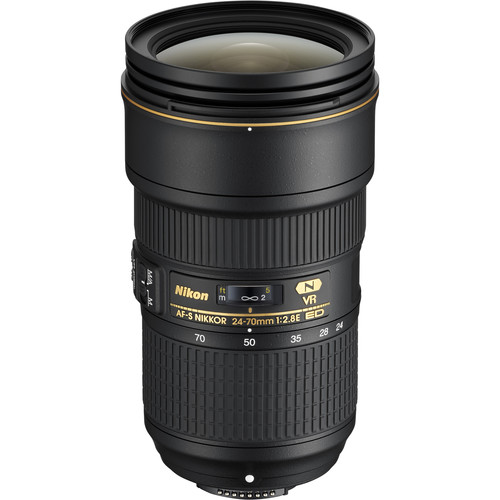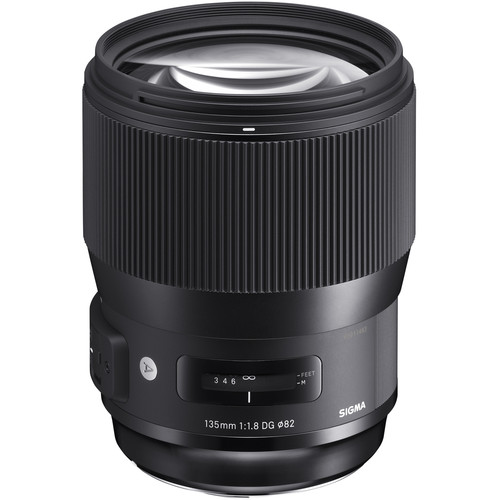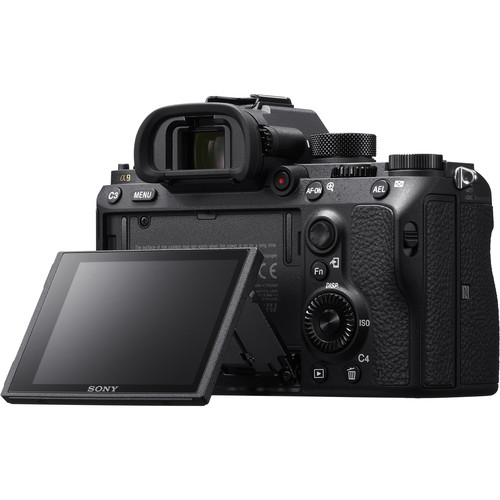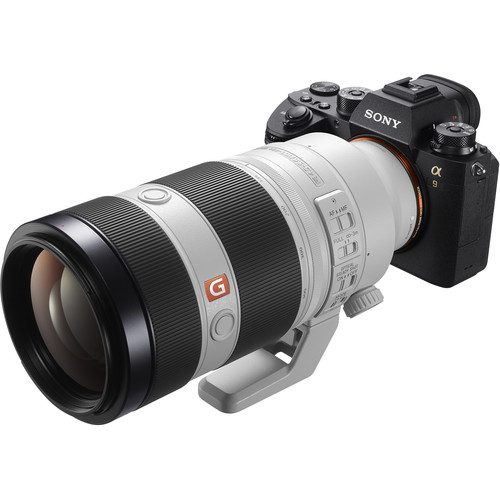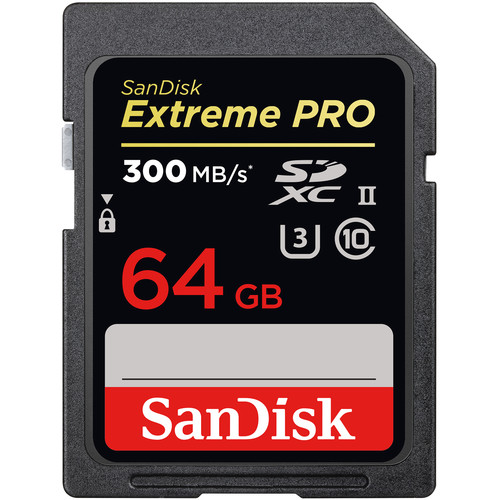I'm no stranger to the Nikon D850 after having spent a fair amount of time reviewing the D800 and D810, but neither model impressed me enough to give it a highly recommend rating. Would this be the one to change my mind?
To make this camera look its best, I decided to pair it with two fantastic lenses - the Nikon Nikkor 24-70mm f/2.8E ED VR and the hot new SIGMA 135mm f/1.8 DG HSM Art. Both are razor sharp and have their strengths to make the most of what this 45.7MP sensor has to offer!
In my Nikon D810 review, the Zeiss Otus 55mm & SIGMA 50mm Art Series went head to head and the SIGMA came out victorious thanks to its AF advantage. Would the 135mm Art series be just as impressive?
Introduction
While the D800 & D800E failed to impress me, I did take a liking to the D810 thanks to the great lenses I was able to test with it. With that said, I wasn't really motivated to get one because the additional shutter speed required to get a sharp shot. This coupled with the unimpressive high ISO performance made it unpractical for most scenarios. As a result, so best images required a tripod or studio lights which made it impractical for my needs.
Since I did my D810 review, I've had the pleasure of using the incredible Sony a7R II, the Canon 5Ds and 5Ds R, and the impressive but lesser megapixel a9 which many believe to be a preview of what is to come in the highly anticipated a7R III.
With a lot more reference products to demonstrate that the technology definitely exists to improve upon the D810, would the third time finally be a charm? Would this be the Sony a7R II killer that some were predicting it would be? Is it really worthy of DxO's #1 sensor ranking?
Body Thoughts
Ergonomics-wise, this is typical Nikon which is a good thing since there's plenty of buttons with many of them being programmable. The body design is far superior than what you get on a Canon or Sony, so even though there's no meaningful changes beyond the removal of the the built-in flash for the sake of better weather sealing, and a handy tilt screen which will make macro photographers happy.
Yes, there's improvements like the trick Focus Shift feature which makes collecting shots to use with your focus stacking software much easier, but it offers no in-camera magic. There's also the highly useful built-in intervalometer which makes Time Lapse photography much easier. In fact, Nikon even went the extra mile to let you make a 8k video out of these captured images which is pretty slick.
That said, there's not much else to say. Nikon has been making one of the most useful camera bodies for years, and this is a very easy and enjoyable to use camera body - nuff said.
Studio Shots
These first two shots were taken under my Elinchrom studio lights with a clamshell setup. I use a Lastolite Triflector with gold and silver stripe panels that caused a warm tone when used with the Auto0 Auto White Balance setting of the D850.
The photos shown are 100% unedited from the in-color camera JPEG, but if you click the links under and view them in Google Chrome browser you'll see color corrected versions made from the NEF file in Lightroom CC Classic using the new Version 4 Camera Standard profile with lens corrections. White balance was achieved in the NEF converted versions using the far left portrait Creative Enhancement Target of the X-Rite ColorChecker Passport Photo.
Sigma 135mm Art at f/9 for 1/200 sec at ISO 100
(Full Size Color Corrected from NEF - ProPhoto RGB JPEG Version)
100% zoom of camera right eye from Sigma shot above
100% zoom of camera right eye from Nikon shot below
Nikkor 24-70mm f/2.8E ED VR - f/9 @ 70mm for 1/200 sec at ISO 100
(Full Size Color Corrected from NEF - ProPhoto RGB JPEG Version)
These are two great lenses, so I was surprised at how well the 24-70 faired against the Sigma, but to my eyes the Sigma still has the clear advantage in terms of sharpness and detail resolution.
Outtake shot of Kai using the Sigma 135mm - f/8 @ for 1/250 sec at ISO 100
100% crop - click for full size shot
For fun I also included this unedited Nikon 24-70mm f/2.8E ED VR outtake shot done under the same studio lighting and the Auto2 white balance:
f/9 @ 70mm for 1/200 sec at ISO 100
For those who haven't used a camera with a resolution this high, you will have to make changes in the way you have historically worked in the studio. Depth of field is a challenge just like medium format cameras as even f/8 and f/9 exhibit shallow depth of field challenges between the iris and eye brow, especially visible above for subjects with deep inset eyes. The net result is that it is not possible to get both in sharp focus like you can with lower megapixel cameras, unless you stop down your aperture to a larger f-stop number. With that said, a clear advantage of the extra megapixels is a significant reduction of specular highlights on the nose and forehead compared to those found with lower resolution cameras.
In the studio, I love the D850 - especially with a great lens like the Sigma 135mm Art.
Real World Shots
The following are 100% unedited shots that link to the original in-camera JPEG. All of the shots featured were taken handheld using either Aperture Priority with the Faster ISO sensitivity setting for Auto ISO or in Manual with Auto ISO. All camera settings were set to their default including the picture control (Auto) and the white balance was set to personal taste (typically Auto2 or Shade):
f/2 @ 135mm for 1/250 sec at ISO 900
Camera shake is a huge challenge with this camera, but if you can keep the camera rock solid as I did here by having my elbow on the table, you can get a sharp shot without having to do 3x+ the reciprocal of the focal length (e.g., 1/400+ in this case)
f/2.8 @ 70mm for 1/500 sec at ISO 2500
Despite the distraction of the fingers, the auto 3D Face Tracking AF did a good job of finding Kai's eye and doing what I wanted the camera to do
f/2.8 @ 70mm for 1/250 sec at ISO 560
With the 24-70, I got an interesting and colorful shot...
f/2.8 @ 135mm for 1/200 sec at ISO 320
but I enjoyed having the 135mm where even at f/2.8 I could get in closer to my subject and bask in the buttery smooth bokeh I get from this excellent lens
f/5 @ 135mm for 1/200 sec at ISO 400
Zoom in and you'll see how this many megapixels helps to you resolve flaws on the car and details on the leaves. I used 1/200 sec as a shutter speed to try to limit motion blur in the leaves
f/13 @ 135mm for 1/60 sec at ISO 100 (tripod)
This shot was impressive because of the tonal range on the boat and sky even with the in-camera JPEG. By using the RAW, you can do some really cool processing on this shot.
f/2.8 @ 135mm for 1/2000 sec at ISO 72
I pulled over on the side o the road and took a quick snap of these paragliders just to see how the camera would resolve the detail on them. It's impressive to see how much you can seem when you really zoom in! Click the image and see for yourself!
f/2.8 @ 135mm for 1/320 sec at ISO 500
The 135 was just so fun to shoot with and the dynamic range of this camera helped to get the specular highlights at bay despite Sierra's unpowered skin
f/4 @ 50mm for 1/800 sec at ISO 100
I'm used to good in-camera JPEG from Sony, Fujifilm and Canon cameras, but this is a great example of why Nikon shooters should always keep their NEF RAW files around
Notice how bad the pumpkin looks and how overblown Kai's face is with the in-camera JPEG
f/4 @ 50mm for 1/800 sec at ISO 100
Thankfully with just some tone adjustments, it's easy to recover from the NEF file to get a much more usable image, so the in-camera JPEG's leave you wanting for more with orange tones on this camera compared to other brands I've tested - including the iPhone 7!
Without In-Camera HDR
To address the above problem you could turn to in-camera HDR which is useful for shots like this
With In-Camera HDR
Notice how it takes advantage of the great dynamic range of this camera to come up with a much better result in mixed light, but it comes at the expense of motion blur when your subjects are alive vs ones that are dead - ha ha
With In-Camera HDR on - oops!
This is proof that the HDR mode really is taking and combining multiple exposures even though you only hear what sounds like two exposures
f/2.8 @ 48mm for 1/200 sec at ISO 7200
High ISO performance is drastically improved over the D800 as this ISO 7200 image definitely impresses
f/2.8 @ 32mm for 1/125 sec at ISO 2000
Auto focus performance was quite good and the VR helped to get a lot more keepers with the 24-70 than I got with the 135mm
f/4 @ 70mm for 1/160 sec at ISO 25600
ISO 25,600 - are you kidding me?
This is a huge improvement over the D800 and I think a big improvement over the D810 as well
f/4 @ 70mm for 1/320 sec at ISO 16000
ISO 16,000 was downright sharp in reasonable lighting conditions
f/2.8 @ 52mm for 1/1000 sec at ISO 5600
This is only one of a series I took in burst mode with continuous AF, but I found that if you have enough light for 1/1000 or faster you have an AF system that can handle active subjects
f/2.8 @ 135mm for 1/1000 sec at ISO 100
For fun I thought I'd see how much detail could be resolved in this fake webbing. It was quite impressive!
f/3.2 @ 135mm for 1/640 sec at ISO 900
How can you not love the 135mm Art? Wonderful bokeh and crispy sharp detail!
f/4 @ 135mm for 1/500 sec at ISO 4500
This would have been a good time to play around with the focus stacking, but sadly I was handheld this day. That said, this is pretty good for handheld at f/4 and ISO 4500!
f/4 @ 135mm for 1/500 sec at ISO 1800
Once you start shooting flowers with this lens, it gets addicting in a hurry.
The D850 makes for a nice file that captures gobs of detail
f/4 @ 135mm for 1/500 sec at ISO 3600
Yes, a needless shot but look at the detail of the fabric in the face - ha, ha!
Just wait, if you get a D850 you'll be doing this too (especially if you have a killer lens like the 135!!!)
f/1.8 @ 135mm for 1/640 sec at ISO 4000
Despite using my handheld technique on this shot (the only one in this article), I still found it tricky to get precise focus on the eye. As a result, I think I needed to use the USB Dock to fine tune the AF calibration of this lens to this camera
For more review photos, see http://ronmartinsen.com/nikon/d850.
Please note that all photos are copyright Ron Martinsen - ALL RIGHTS RESERVED. You may view these photos only while your web browser is open to this article, but you must delete them when done. No printing, linking, editing, or reuse of any kind is permitted without expressed written consent.
One Edited Shot
Typically I don't include edited shots in my reviews because I want readers to see what the camera can do, not what I can do with Photoshop. However, I'm making a rare exception in this case as the positive feedback I got from this edited shot was so overwhelming from my pro photographer friends (names you'd recognize) that I decided to share it here.
The photo above is hosted on 500px where you can learn more about it, but the original was in color. The color version actually shows off a better job with the dynamic range of the underexposed subject and the background - details which get lost in the above post-processing.
While I wanted to hate the D850 for the technical things about it that drive me crazy, there is an indisputable fact that the dynamic range of this camera led to me capturing some interesting shots that I was quite pleased with. While it may not perfect, it's definitely a nice piece of photography equipment!
Compared to the Canon 5Ds, 5Ds R, and Sony a7R II
If someone set the Nikon D850 down in front of me along side the Canon 5Ds, 5Ds R, and Sony a7R II and told me I could have anyone one that I want plus $5000 for lenses to go with it, I'd still probably go for the Sony a7R II. While the D850 is my favorite Nikon D8** series camera, it's not as easy to pull off hand held shots like what I could get with the Sony or even the Canon's for that matter. This camera has a sensor that performs much closer to the Sony, than the Canon, but when all things are considered I still prefer the Sony - despite its freaking horrible menus. With that said, the a9 showed a lot of promise in addressing the things I hated about the Sony body so there's hope that finally might have something magical for us in its next release.
Conclusion
For most existing Nikon users with an investment in Nikon lenses, the D750 is a much better investment for everyday use. However, the tonal range advantage of the D850 - especially in specular highlight areas - makes it tough to pass on. In fact, if you are a Nikon shooter who is looking for a specialized body to give you the best studio and landscape shots that the platform offers, then look no further - this is the camera you want.
While it definitely pays to bump up the ISO sensitivity settings of Auto ISO to the Faster setting to ensure that your shutter speeds stay up when you are in aperture priority. Even with VR turned on, I was surprised at how easy it was to get shots where the eyes of my subjects clearly had motion blur despite them holding perfectly still. Part of it was the depth of field challenge previously mentioned, but I also believe the lack of a precision spot auto focus feature that Canon offers or the eye tracking feature of Sony & Fujifilm.
With those gripes out of my system, I can finally highly recommend this camera - for Nikon shooters. As for lenses, there's lots of good choices, but if it were me I'd be investing in the Sigma 85mm and Sigma 135mm Art. These two incredible lenses have impressed the heck out of me and really made me a Sigma fan - when I used to be a Sigma hater.
Where to Buy?
CLICK HERE to learn more or buy the Nikon D850.
CLICK HERE to learn more or buy the Nikkor 24-70mm f/2.8E ED VR.
CLICK HERE to learn more or buy the SIGMA 135mm f/1.8 DG HSM Art.
Other articles you may enjoy
If you enjoyed this article, you may also enjoy these reviews:
- Nikon D5 (Nikon D4s)
- Nikon D500 with 24-70mm f/2.8 VR & SB-5000
- Nikon D610 (D600 vs Canon)
- Nikon D750 - Yeah, you want this one!
- Nikon D810 (includes SIGMA 50mm Art & Otus 55mm)
- SIGMA 120-300mm
- SIGMA 24mm Art Series
- SIGMA 35mm Art Series
- SIGMA 50mm f/1.4 Art Series (includes comparisons)
- SIGMA 85mm f/1.4 Art Series - the best art series I've tested
- SIGMA USB Dock
- Sony a7R Mark II with 24-70mm
- Sony a9 with 24-70mm GM
- NEC PA322UHD 4k for Pro Photo & Video Editing
- Canon PRO-1000 and Epson P800 Fine Art Printer Reviews
- Canon 5D Mark IV
- Canon 5Ds
- Canon 5DsR
- Canon 6D (vs Canon 5DM3 & D600)
Enjoy these and more on the Reviews tab as well as Ron's Recommendations.
Disclosure
If you make a purchase using links found in this article, I may make a commission. It doesn’t cost you a penny more, but it does help to support future articles like this.


